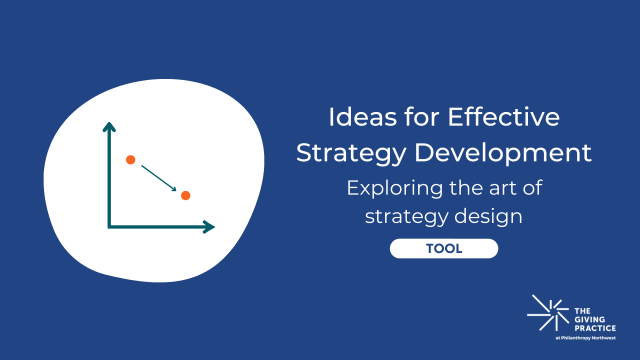
At The Giving Practice, we begin every project with a sense of excitement and optimism. So when my colleague Mark Sedway suggested we try a premortem exercise as part of our initial meeting with a new client, I was nervous. I thought launching a project should be a time for optimism, so I was hesitant to suggest an exercise where we say to the client: “Let’s assume this project has failed. What are the reasons it failed?” I have been intrigued by premortems as a tool to understand what failure could look like and why, but I worried it would feel depressing to start an engagement by thinking about worst case scenarios rather than the opportunities ahead.
Gary Klein wrote about the premortem and the value of this kind of thinking in Harvard Business Review:
A premortem is the hypothetical opposite of a postmortem. A postmortem in a medical setting allows health professionals and the family to learn what caused a patient’s death. Everyone benefits except, of course, the patient. A premortem in a business setting comes at the beginning of a project rather than the end, so that the project can be improved rather than autopsied. Unlike a typical critiquing session, in which project team members are asked what might go wrong, the premortem operates on the assumption that the “patient” has died, and so asks what did go wrong.
This sounds like a great idea in theory. It would offer an important way to unearth project leaders’ fears, potential trip-wires ahead or bad experiences from the past that color their views today. But would they see it this way? Would they perceive us as depressing and deficit focused practitioners?
Mark and I gave it a try. “Assume the project has failed,” we asked as part of our kickoff meeting. “Why?” There was a long silence. And then, several thoughtful observations emerged. One person said the project failed because their organization’s board didn’t accept the results. Another person said it failed because they didn’t develop enough resilience as part of the project, and early losses, rather than early wins, killed the whole thing. Someone talked about people who might be “overly cautious or small-minded.”
Well, it worked. I was relieved and inspired. I saw how encouraging people to assume failure would happen (rather than might happen) touched a chord and allowed everyone to say the things that were already on their minds. It offered an honest and intimate conversation that created a level of trust within the group. And the answers to the next question -- “What will success look like?” -- were clear and passionate.
In the end, the group gained tremendous insight about the best path forward and the vulnerabilities to look for and, most important, formed a shared commitment to face the hard realities that are often difficult to disclose and discuss. Although my positive outlook always makes me feel nervous when I ask about failure so early in a project, I have learned that the honesty and openness that this question calls for brings a certain amount of relief to everyone, not just me.
To read more about premortems, here are a few resources:
https://hbr.org/2007/09/performing-a-project-premortem
http://www.hewlett.org/blog/posts/power-premortems



